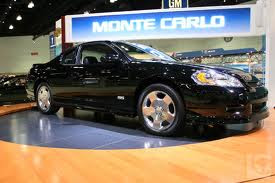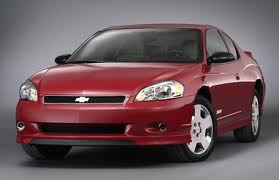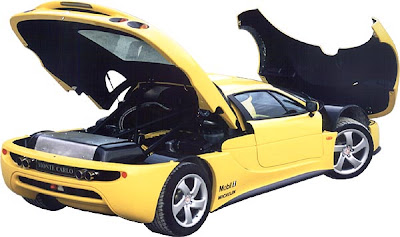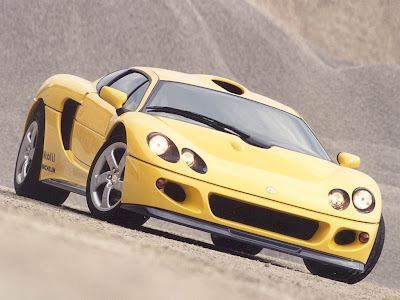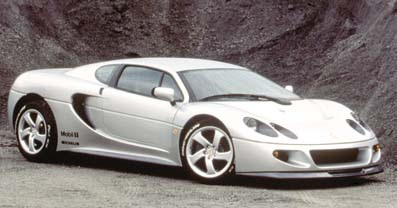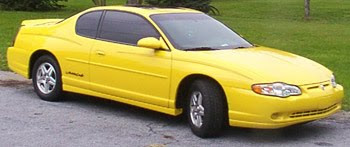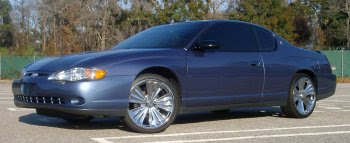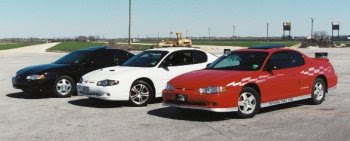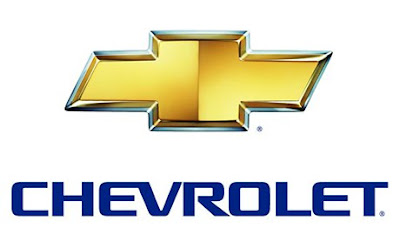Monte Carlo Cars The First generation 1970
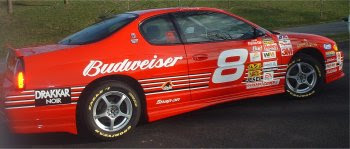
Picture Of
Monte Carlo CarsThe standard powertrain was the 350 CID (5.7 L) Chevrolet "Turbo-Fire" small-block V8 with a two-barrel carburetor, rated at 250 hp (186 kW) (gross) at 4500 rpm and 345 ft·lbf (468 N·m) of torque at 2800 rpm, mated to a column-mounted 3-speed Synchro-Mesh manual transmission. Front disc brakes were standard equipment. The dashboard was basically identical to the Chevelle except for fake wood trim, according to Holls a photographic reproduction of the elm trim used by Rolls-Royce, and higher grade nylon (or vinyl) upholstery and deep-twist carpeting were used. Base priced at US$3,123, the Monte Carlo cost $218 more than a comparable Chevelle Malibu.

Picture Of
Monte Carlo CarsVarious options were available. A two-speed Powerglide automatic transmission (on 350 CID engines only), three-speed Turbo-Hydramatic, or a four-speed manual; most
Monte Carlos carried the Turbo-Hydramatic. Variable-Ratio Power Steering, power windows, Four Season Air Conditioning, power seats, Rallye wheels, Strato bucket seats, center console, full instrumentation, and various other accessories were also available, bringing the price of a fully equipped
Monte Carlo to more than $5,000.
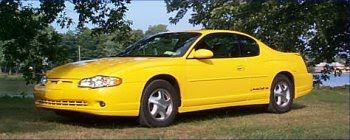
Picture Of
Monte Carlo CarsOptional engines included the four-barrel carbureted Turbo-Fire 350 CID small block V8, rated at 300 hp (224 kW) at 4800 rpm and 380 ft·lbf (515 N·m) at 3200 rpm, the Turbo-Fire 400 (400 CID/6.5 L) with a two-barrel carburetor, rated at 265 hp (198 kW) at 4800 rpm and 400 ft·lbf (542 N·m) at 3800 rpm, and the Turbo-Jet 400 (402 CID/6.6 L) with a four-barrel carburetor, rated at 330 hp (246 kW) at 4800 rpm and 410 ft·lbf (515 N·m) at 3200 rpm). Note that the two Chevrolet 400 CID V8s offered this year were actually two different designs. The two-barrel carbureted Turbo-Fire 400 was a Small Block Chevrolet V8 engine, similar, but very different internally, to the 350, while the Turbo-Jet 400 was a slightly enlarged version of the 396 CID big block V8 and had an actual displacement of 402 CID.

Picture Of
Monte Carlo CarsThe most sporty and powerful option was the Monte Carlo SS 454 package. Priced at $420, it included a standard Turbo-Jet 454 of 454 CID (7.4 L) with a four-barrel carburetor, rated at 360 hp (269 kW) at 4800 rpm and 500 ft·lbf (678 N·m) of torque at 3500 rpm. It also included heavy-duty suspension, wider tires, "SS 454" badging, and an automatic load-leveling rear suspension. The Turbo-Hydramatic transmission (with a 3.31 rear axle) was a mandatory option with the SS package, although it still cost $222 extra. Weighing only a bit more than a comparably equipped Chevelle SS 454, the Monte Carlo SS was quite a fast car, although it accounted for less than 3% of Monte Carlos sold in 1970.

Picture Of
Monte Carlo CarsA labor strike at
Chevrolet's Flint, Michigan assembly plant (where most
Monte Carlo Cars production was scheduled) during the early months of the 1970 model year immediately following the car's introduction on September 18, 1969 limited overall model-year sales to 159,341; short of the projected 185,000. During those early months,
Monte Carlos were in short supply, with full-scale production not happening until February 1970, leaving many would-be buyers disappointed after going to their
Chevrolet dealers and finding no
Monte Carlos in stock. However, once full production got underway,
Monte Carlos sold briskly and mostly at full list price (usually being ordered with many extra-cost options), making it a very profitable model for
Chevrolet and its dealership networks. SS 454s, however, did not sell so well in 1970, with only 3,823 of the 1970
Monte Carlos being the most sporty and powerful model in the range.
















 9:33 PM
9:33 PM
 MINI Cooper Cars Blog
MINI Cooper Cars Blog



















